




Our mums and grandmas are our superheroes and biggest supporters, but sometimes we forget to say how much we appreciate them.
With Mother’s Day just around the corner, I want to take this opportunity to honour all the mums (and my incredible mum Lynn), aunties, grandmas and ‘mum–like’ figures in our community, who fill our lives with love, wisdom and endless strength.
Our role as ‘mums’ is so important that sometimes I feel like society has forgotten just how grand an impact we have.
"All that I am, or ever hope
to be, I owe to my mother" – Abraham Lincoln
Happy Mother’s Day Coasties – we love you, we adore you, you rock!

Art Director
Tanzie Carpenter tanzie@onthecoastpublications.com.au
Production Luke Carpenter luke@onthecoastpublications.com.au
Editor Jessica Sanford editor@onthecoastpublications.com.au
Publisher
Tanzie Carpenter / 0414 611 851 Luke Carpenter / 0405 449 339
trading as On the Coast Publications ABN 52 212 212 482 PO Box 3251, Bateau Bay NSW 2261
For advertising enquiries
advertising@onthecoastpublications.com.au
For article contribution enquiries editor@onthecoastpublications.com.au
Imagery
freepik.com
Contributors
Sophie Doyle, Dorian Mode, Lydia Thorpe, Dr Nicholas Altuneg, Sarah Tolmie, Margaret Artist, Sam Woods, Jordi Woods, Shell Barker and Diana Arundell.
onthecoastpublications.com.au
Computers are what Kris Cranfield is an expert at and it’s what pushed him to create his business, Systems Up. Systems Up is a computer support service, where Kris comes to your home to help you with any technical issues that you may be experiencing.
Kris is a local resident of Bateau Bay and is a supporter and sponsor of the Shelly Beach Surf Lifesaving Club. He’s passionate about letting residents of the Central Coast know that they don’t have to put up with pesky computer or technology issues, Kris and his team can
fix your tech issues, and at your home, so you don’t have to go anywhere!
Some of the common concerns that Systems Up customers often experience is security and password protection issues, device set up errors, connections to Wi–Fi and NBN services, mobile phone errors and printer malfunctions.
While these kinds of issues can be frustrating and hard to navigate for the average homeowner, they’re but a small issue to tackle in no time for the Systems Up technicians.
Kris is capable of installing new devices that you may have purchased and don’t know where to start –

We know that older Australians are more susceptible to online scams, phishing attacks, and malware due to lack of awareness or familiarity with cybersecurity practices
including a new TV, phone, laptop or tablet. The team can connect your other devices to your new device to make sure that it is synchronized and working perfectly with everything else.
We know that older Australians are more susceptible to online scams, phishing attacks, and malware due to lack of awareness or familiarity with cybersecurity practices.
According to the Australian Bureau of Statistics (ABS), two thirds of Australians were exposed to a scam in 2021–22, and the trend is on the rise with a 55% increase in events in the previous 12 months.
To help combat this, Systems Up has access to the latest security software, which is like getting a flu shot for your devices — it helps keep them healthy and protected from nasty bugs and limits your exposure to online scams and malicious programs.
Systems Up’s quality products, services and communications can keep it simple and affordable across all your




tech needs. They have set fee costings so you know what you’re paying before a technician arrives at your door. By becoming a Systems Up customer, you’ll receive outstanding service, which is available 24 hours a day, 7 days a week (T&Cs apply).
So if you've been sitting on an IT issue that you don’t know what to do with,
don’t delay any further! Your devices and IT services are designed to make your life easier, not harder. Let Systems Up send their helpdesk to you and get all those niggly little issues sorted.
For more information about Systems Up services, visit our website www.systemsup.com.au











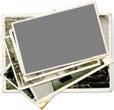








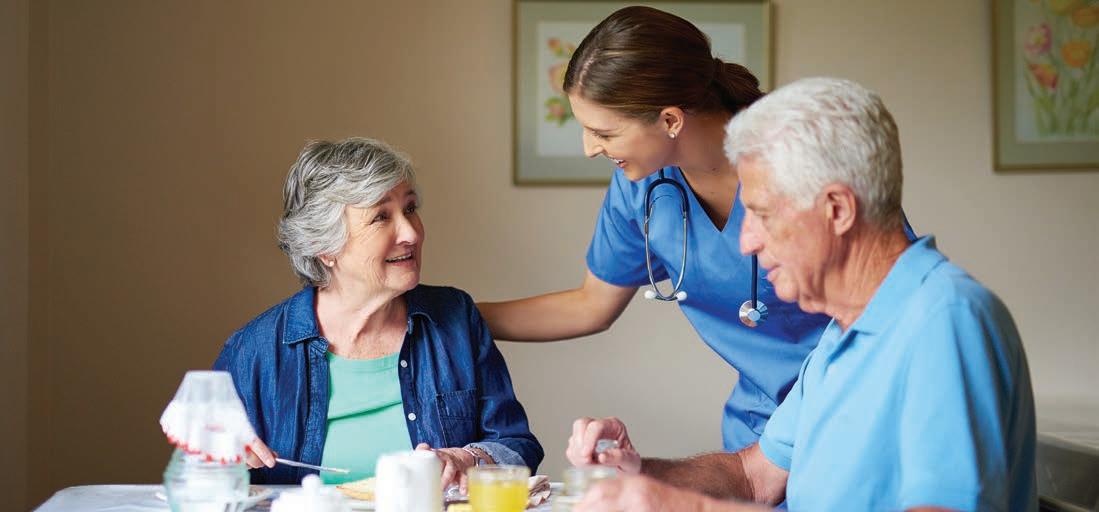
Confused about aged care fees and what it all means? You are not alone. In this article we simplify the basics of aged care fees for you.
If you, or someone you love, need to make a move into residential aged care, understanding the fees and getting a clear picture of what it will cost is not easy. There are all sorts of fees and you will come across a myriad of acronyms such as RADs, DAPs, MPIRs, MTAs and MTFs or possibly RACs and DACs.
So where do you start and how do you navigate through this maze? And what might change in the future, following the recent release of the Aged Care Taskforce report on aged care funding?
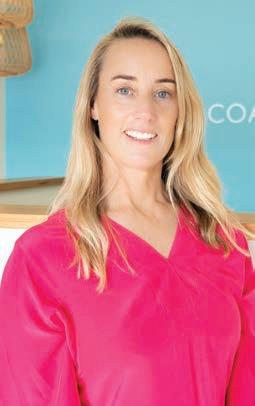
A move into residential care is essentially a move into a new home – just a home with built–in care and support. Just like living in your home, the fees for residential care can be divided into three categories:
Paying for accommodation
Paying for daily living expenses
Paying for care services.
The way these fees are calculated is different to the spending choices you have while you live in your own home. The government sets some of the rules and fees. Other fees may be set by the care provider.
Paying for your room is probably the most complicated part.
Aged Care accommodation is a cost you often need to fully fund, so it is important to make affordable choices
The cost of a room can be anywhere up to around $2.5m but on the Central Coast the average is around $400,000–$500,000. While you are not buying property, you still need to either find a lump sum of money to buy the right to live there or generate cashflow to rent your room.
This is a cost you often need to fully fund, so it is important to make affordable



On average, the government currently funds around 75% of care costs, with the remaining 25% paid by residents according to a means–test which determines financial capacity
choices. If you are assessed to have low financial capacity, the government sets a different pricing structure and might help by paying some (or all) of the room cost.
Some of the discussion on reforms in this space may see the phasing out of the lump sum purchase option, with everyone just paying a daily rent.
PAYING FOR DAILY LIVING EXPENSES
Once you move into care, many of the daily bills you receive for food, electricity, gas and cleaning will no longer come to you. Instead these are paid by the care provider and you will be asked to pay a flat daily fee to help cover the shared costs of these expenses.
Potential reforms in this area may see
residents paying higher fees for these services. Currently the government sets a flat fee for all residents in all residential care services, but potential changes may see this being set individually by care providers based on the level and quality of services provided.
On average, the government currently funds around 75% of care costs, with the remaining 25% paid by residents according to a means–test which determines financial capacity.
The decisions you make around how to structure your assets are important as they may impact how much you will be asked to pay. To help with planning there is an annual cap and a lifetime cap on the fees payable.
It is generally agreed that these costs are high and need to be subsidised by the government but there is not a clear direction yet on where reform will go in this area. Some proposals consider that means–testing should be abolished with the government paying the full cost. Other proposals consider that means–testing should be increased so that wealthier residents pay more of the cost. We will need to wait and see what the government decides to do.
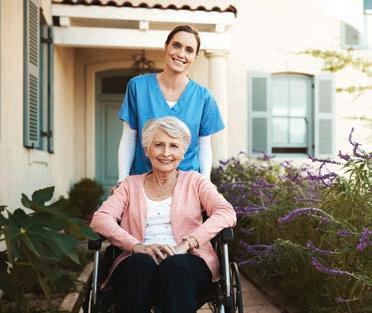
Making aged care decisions on your own is hard. There are so many moving parts with family preferences, taxation, age pension, estate planning and fee implications. That’s why we are here to help.
As an experienced financial planner who specialises in aged care advice we have the experience, knowledge and tools to help you review your options and make good decisions. If you need help, or want to start planning ahead, call our office on 02 4325 0884 to arrange an appointment.
Morgans Financial Limited 1/6 Burns Cres, Gosford www.morgans.com.au/gosford
Sophie Doyle (AR#000470612) is a Retirement and Aged Care Specialist at Morgans Financial Limited (Morgans AFSL 235410 / ABN49 010 669 726); with a passion for assisting people make informed financial decisions, as they navigate their way through retirement and aged care. Disclaimer: While every care has been taken, Morgans Financial Limited makes no representations as to the accuracy or completeness of the contents. The information is of a general nature only and has been prepared without consideration of your individual objectives, financial situation or needs. Before making any decisions, you should consider the appropriateness for your personal investment objectives, financial situation or individual needs. We recommend you see a financial adviser, registered tax agent or legal adviser before making any decisions based on this information. Current as at 12 March 2024
Book an appointment at one of many offices or in the comfort of your home with one of our

Book an appointment at one of many offices or in the comfort of your home with one of our mobile representatives. Office Locations
376 The Entrance Road, Erina Heights 2 Viewpoint Drive, Toukley 14 Mingara Drive, Tumbi Umbi 41 Palmdale Road, Palmdale 460 Avoca Drive, Green Point 1083 Pacific Highway/ Cnr Telegraph Road, Pymble
Do you have gritty, itchy, sore, tired or watery eyes? Eyes that are sensitive to light? Are these relentless Dry Eye symptoms leaving you feeling drained and frustrated? It’s time to break free from the cycle and embrace a new vision of relief at Dry Eye Solution.
Imagine a world where your eyes feel refreshed, rejuvenated, and ready to take on the day without the constant battle against dryness. That’s the offer of our dedicated team at Dry Eye
Solution – to help you reclaim comfort and clarity in your vision.
From the moment you step into our clinic, you’ll feel the warmth and compassion of our team who are committed to understanding your unique needs and concerns. Our comprehensive 45–minute assessment, priced at $120 with a Medicare rebate of $62.45, is designed to uncover the root cause of your Dry Eye symptoms and pave the way for personalised treatment solutions tailored just for you.

Our team will work closely with you to address your current diet and lifestyle to ensure your best results
But what truly sets us apart from the rest? It’s our unwavering commitment
to holistic care and long–lasting relief. We’re not here to simply put a band–aid
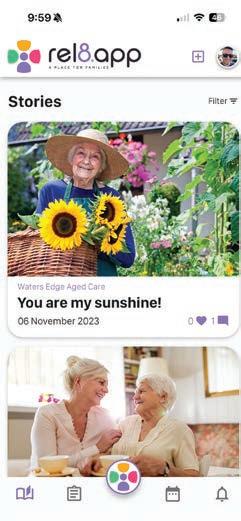
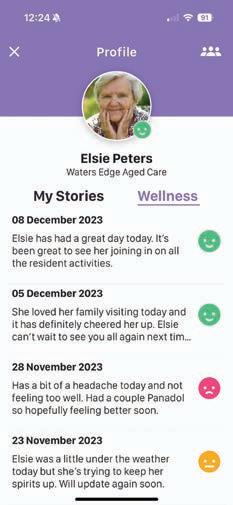
on your symptoms – we’re here to ignite a transformation from within.
At Dry Eye Solution, we have the way forward. Say hello to IPL therapy with the gold standard Lumenis OptiLight IPL – a revolutionary treatment that harnesses the power of light to target inflammation and stimulate tear production in the eyes. Lumenis OptiLight is the only IPL treatment with both FDA & TGA approval for the treatment of Dry Eye.
During your IPL therapy session, priced at $299 per treatment (with a 10% discount for pension card holders), our highly trained technician covers your eyes with protective shields and applies
a cooling gel to the skin around your eyes. Gentle pulses of light are emitted by the Lumenis OptiLight IPL device penetrating deep into the underlying inflammation in your eyelid glands. It’s a quick and painless process, lasting just 20–30 minutes, and the results speak for themselves. A minimum of 4 treatments are required, and more may be required depending on the severity of your symptoms.
But we don’t stop there. Our team will work closely with you to address your current diet and lifestyle to ensure your best results. Your journey to comfort doesn’t end with IPL therapy – it’s just the beginning of a brighter, more comfortable future.
Let’s talk about those notorious eye
drops. While they may offer temporary relief, did you know they could be doing more harm than good? Using eye drops can cause damage to the cornea, requiring surgery. Plus using just one bottle of drops a week as a band–aid is more expensive than IPL treatment, which treats the root cause of Dry Eye.
So, what are you waiting for? It’s time to rediscover comfort and clarity in your vision.
Schedule your assessment at Dry Eye Solution today and take the first step towards a life free from the grip of dry eye symptoms.
Eye Solution has clinics in Erina, Newcastle, Chatswood, Double Bay, Miranda and Burwood. Phone 02 4312 4273 for more information.


The Southern Aurora was a renowned train service in Australia that operated in the 60s. It was a premier overnight train that linked Sydney and Melbourne, providing passengers with a luxurious mode of travel. Known for its distinctive streamlined design and high–quality service, it featured spacious sleeping cars and an elegant dining car where passengers could enjoy gourmet meals with a modest glass of moselle or claret.
Unfortunately, in 2003, the service was discontinued due to increased competition from air travel. But for vintage tragics like my wife and me, the Southern Aurora evokes a bygone era.
The club car lounge, adorned with 60s–era fauna murals (illuminated at night), exudes a nostalgic ambiance. Despite the strict no–smoking policy, a nod to the tobacco–friendly days of the ‘60s is evident with the presence of five repurposed ashtrays in the cabin. The cabins themselves have a cosy, cubbyhouse aesthetic, and the shower and old–school toilet, which remarkably folds into the wall.
The staff who prepare our rooms are all retired Qantas flight attendants, bringing a level of expertise to our journey. So no millennials on TikTok fetching that extra pillow for you; rather, well–groomed, seasoned attendants, calmly guiding you to the emergency exits over the wings.
One of the appeals of this journey for seniors is the fact that the train is stationary at night, ensuring a comfortable and stable night’s sleep without the lateral movement that might have you losing your balance in your sensible shoes. Moreover, for travelling singletons, there are cute–as–button single cabins, something unique to this train.
Our train journey is broken up by a series of daily tours, each offering a
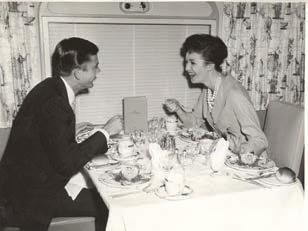
The staff who prepare our rooms are all retired Qantas flight attendants, bringing a level of expertise to our journey
unique experience. Moreover, the dining on the Southern Aurora is a highlight. Meals are à la carte, offering culinary experience without unnecessary extravagance. (Seniors enjoy their menus without the extraneous adjectives, I find.) The average bottle of wine onboard, which is not included in your fare, is priced at a wallet–friendly forty bucks. Soft drinks and coffee are free.


Interestingly, at each historic country station stop, we are ‘papped’. Train enthusiasts, referred to as “spotters,” set their tripods ready to capture the train’s grandeur. The old Southern Aurora is a rock–star in the train world.
After a delicious brekkie of local Trunkey bacon, we head to Hunter Valley Gardens. Here we’re immersed in a world of natural beauty. Post roses it’s a wine tasting at Audrey Wilkinson Vineyard; one of the oldest vineyards in the Hunter. Their vibrant bold wines are matched with delicious local cheeses. I’m lactose intolerant but I’ve decided it’s the way I want to go.
We then reboard to chug to the railway town of Werris Creek. Here, I have the privilege of meeting Gwen, the president of the railway association, who graciously leads me around the railway museum and onto a place that carries deep significance — a poignant memorial honouring the railway workers who lost their lives. Indeed, Gwen’s own husband, Neville, lost his legs in a rail accident, aged 22 at the time.
The following morning, we breakfast at pretty Hillside Orchard, Orange. Here, with the freshest apple juice in hand, we meet with the lanky orchardist and talk all things orcharding before our next adventure via a wonderful 1947 vintage clipper, couching guests to their daily adventures.
Next, Mayfield Garden. It stands as one of Australia’s best cool climate gardens and offers a breathtaking expanse spanning across 16 hectares. It’s quite Anglocentric in its design; the meticulously crafted landscapes, featuring stunning gardens, captivating

water features, and charming follies.
Then it’s all aboooard as the Southern Aurora chugs east towards the coast. Then just before Lithgow, incongruously we head north. But how? Passenger trains don’t head north here. One of the unique features of this journey is you take freight lines, unavailable to the public. As we relax in our cabin with a glass of plonk, we see breathtaking secret backdoor views of the Blue Mountains across the Jamison Valley.

I find myself reflecting on what I truly love about train travel. There’s a romance to it, a sense of nostalgia that’s hard to find on a Jetstar flight to Bali
Then it’s Rylstone Olive Press. A trip highlight, it showcases the finest burst–in–your–mouth produce this plucky region has to offer. Here our antipasto is generously matched with a crisp local Elephant Mountain Pino Gris.
And, sadly, it’s here our journey ends. There is talk of opening the line from Rylstone to Mudgee, now rusting and overgrown with weeds. It would be positive for the region as these vintage train journeys bring much needed city coin to country Australia.
But as I return, watching the blond countryside of the New South Wales Central West scroll past my train window, I find myself reflecting on what

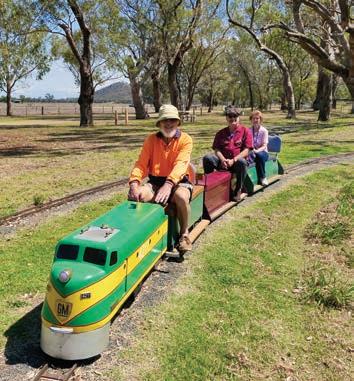


It awakens a longing for a gentler era, a time when life was unhurried and the pursuit of instant gratification was not the prevailing ethos
I truly love about train travel. There’s a romance to it, a sense of nostalgia that’s hard to find on a Jetstar flight to Bali.
What sets train travel apart is the subtle changes in the landscape. The gradual transition from one scene to another, from city to countryside and back again; a journey unto itself. But, most of all, I like the solitude and contemplation that trains offer. In a world dominated by screens and digital distractions, the absence of a screen in my life is a welcome respite, while the gentle motion and metallic soundscape becomes a backdrop to my thoughts.
When you introduce a vintage train into the equation, it magnifies this romance and nostalgia. It awakens a longing for a gentler era, a time when life was unhurried and the pursuit of instant gratification was not the prevailing ethos.
Vintage trains transport us to a bygone world, inviting us to immerse ourselves in the timeless beauty of a more deliberate and contemplative journey.
It’s no wonder that trains have been the backdrops for so many cinematic tales – and why so few films are set on buses.
Caterpillaring into Central Station, we say farewell to the Southern Aurora to overnight at funky Adina Chippendale, where our fascination with mid–century retro continues. With its galah–coloured interior, Parker furniture aesthetic, sepia photos of hard–nosed 60s Redfern and giant flamingo pool toy it’s the perfect inner–city pool–side hotel to decompress before heading home.
For more information, visit www.vintagerailjourneys.com.au
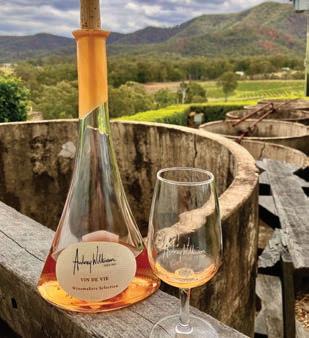
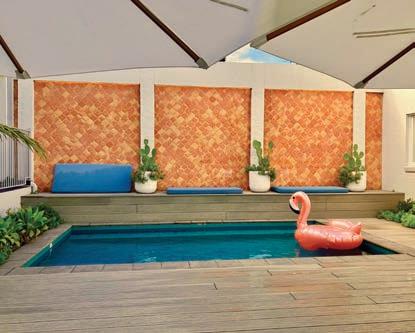
SINGLETONS:
Vintage Rail Journeys offers passengers travelling on their own a cosy single bed cabin to themselves – this is unique to the Southern Aurora.
COMMENCE AND CONCLUDE IN SYDNEY:
This means you don’t need to fly interstate to pick up the train. The trip is contained locally for NSW residents.
RESTFUL NIGHTS:
Admire scenic views by day, rest comfortably by night on stabled trains so no bumpy night’s sleep!
A FRESH PERSPECTIVE:
Discover nsw unseen from the road, witness unique vistas, and traverse unreachable areas by car.
EXTRA ACCOMMODATION:
Arriving late by train can be tiresome. Adina Sydney Chippendale is just a short 5–minute taxi ride away from Central Station and has recently undergone a hip transformation. The hotel boasts a blend of contemporary and retro interior designs, providing guests with a unique ambiance. Its convenient location amidst Chippo’s vibrant trendy cafes, groovy eateries, and art galleries, makes it a good pre/post train option.


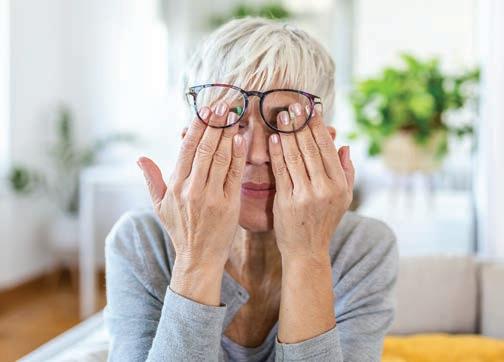
As we age, our eyes undergo various changes, and one of the most common eye conditions affecting older adults is macular degeneration. This condition, also known as age–related macular degeneration (AMD), affects the macula, the central part of the retina responsible for sharp, detailed vision.
During Macular Degeneration Awareness Week 21–27 May 2024, raising awareness about this condition and providing valuable information to help those affected better understand and manage it is essential.
Macular degeneration is an eye disease that causes gradual and progressive damage to the macula, leading to a loss of central vision. This can significantly impact everyday activities that require detailed vision, such as reading, driving, recognising faces, and performing tasks that require fine motor skills.
There are two main types of macular degeneration:
Dry Macular Degeneration is the most common form, accounting for approximately 90% of cases. In dry AMD, the cells in the macula gradually break down, causing a slow and gradual loss of central vision. While less severe than wet AMD, dry AMD can still significantly impact daily activities over time.
Wet Macular Degeneration, although less common, wet AMD is more severe and can lead to rapid vision loss. It occurs when abnormal blood vessels grow under the macula, leaking fluid or blood, which can cause scarring and damage to the macula if left untreated.
SYMPTOMS AND DIAGNOSIS
Early detection and diagnosis of macular degeneration are crucial for effective
management and treatment. Some common symptoms to watch include blurred or distorted central vision, straight lines appearing wavy or curved, dark or empty areas in the centre of your vision, difficulty seeing in low–light conditions, and changes in colour perception.
If you experience any of these symptoms, promptly scheduling an eye examination with an eye care professional is essential. Diagnostic tests, such as visual acuity, optical coherence tomography (OCT), Amsler grid, and fluorescein angiography, can help detect and diagnose macular degeneration accurately.
While there is no cure for macular degeneration, various treatment options are available to slow its progression and manage the condition. These include lifestyle changes, medications and supplements, low vision aids and assistive devices, and, in some cases, surgical interventions.
Lifestyle changes, such as adopting a healthy diet rich in antioxidants and omega–3 fatty acids, regular exercise, wearing good quality sunglasses and avoiding smoking, can support eye health and potentially slow the progression of macular degeneration. Certain medications and supplements may also be prescribed to manage the condition and support eye health.
For individuals with advanced macular degeneration and significant
vision loss, low vision aids and assistive devices like magnifying lenses, telescopic lenses, and screen reading software can enhance the remaining vision and improve the quality of life. In severe cases, surgical procedures such as macular translocation or the implantation of telescopic lenses may be considered, but these options are typically reserved for advanced stages of the disease.
Macular degeneration is an eye disease that causes gradual and progressive damage to the macula, leading to a loss of central vision
Adjusting to life with macular degeneration can be challenging, but there are strategies and resources available to help you maintain your independence and quality of life. Protecting your eyes from excessive ultraviolet light while optimising lighting, utilising magnification tools, organising your environment, and seeking support from macular degeneration support groups can all help make daily tasks more manageable.
IT’S ALL IN THE GENES
Macular degeneration has a strong genetic component, which means
it can run in families. If you have a grandparent, parent, sibling, or other close relative who has been diagnosed with macular degeneration, your risk of developing the condition is significantly increased. Research indicates that those with an immediate family member affected by age–related macular degeneration have a 50% chance of developing it themselves.
Given this elevated risk, individuals with a family history of macular degeneration must be diligent about routine eye exams and screenings. Eye care professionals recommend comprehensive eye examinations at least every two years if you have a close relative with the condition. Regular screenings can detect early signs of macular degeneration before significant vision loss occurs, allowing for timely intervention and treatment to help preserve vision. Don’t hesitate to inform your optometrist or ophthalmologist
about your family history so they can provide appropriate monitoring and care to catch any potential issues early on.
Additionally, staying informed about the latest developments in treatment and management by accessing educational resources from reputable sources can help you make informed decisions about your eye care. Regular eye examinations and ongoing care with an eye care professional are crucial for monitoring the progression of macular degeneration and adjusting treatment plans as needed.
Remember, early detection and proactive management can help preserve vision and maintain quality of life for those affected by macular degeneration. If you or a loved one are experiencing any concerning vision changes, don’t hesitate to consult an eye care professional promptly. With the right support and resources, it is possible
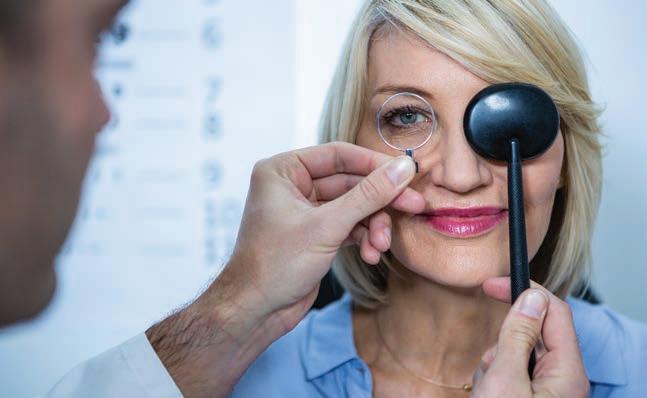
Dr Nicholas Altuneg is a Behavioural Optometrist who has been working on the Central Coast for almost 30 years. He is the co–founder at Eyes by Design, which is in the Kincumber Centre. Appointments can be made by phone 02 4369 8169 or online at www.eyesbydesign.com.au


to navigate the challenges of macular degeneration and continue living an active and fulfilling life.
Macular degeneration has a strong genetic component, which means it can run in families. If you have a grandparent, parent, sibling, or other close relative who has been diagnosed with macular degeneration, your risk of developing the condition is significantly increased
This article is intended to promote understanding of and knowledge about general eye health topics. It should not be used as a substitute for professional advice, diagnosis, or treatment. Always seek the advice of your health care professional prior to incorporating this as part of your health regimen.
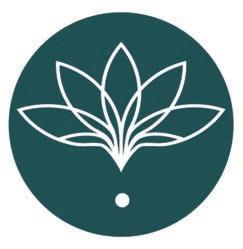
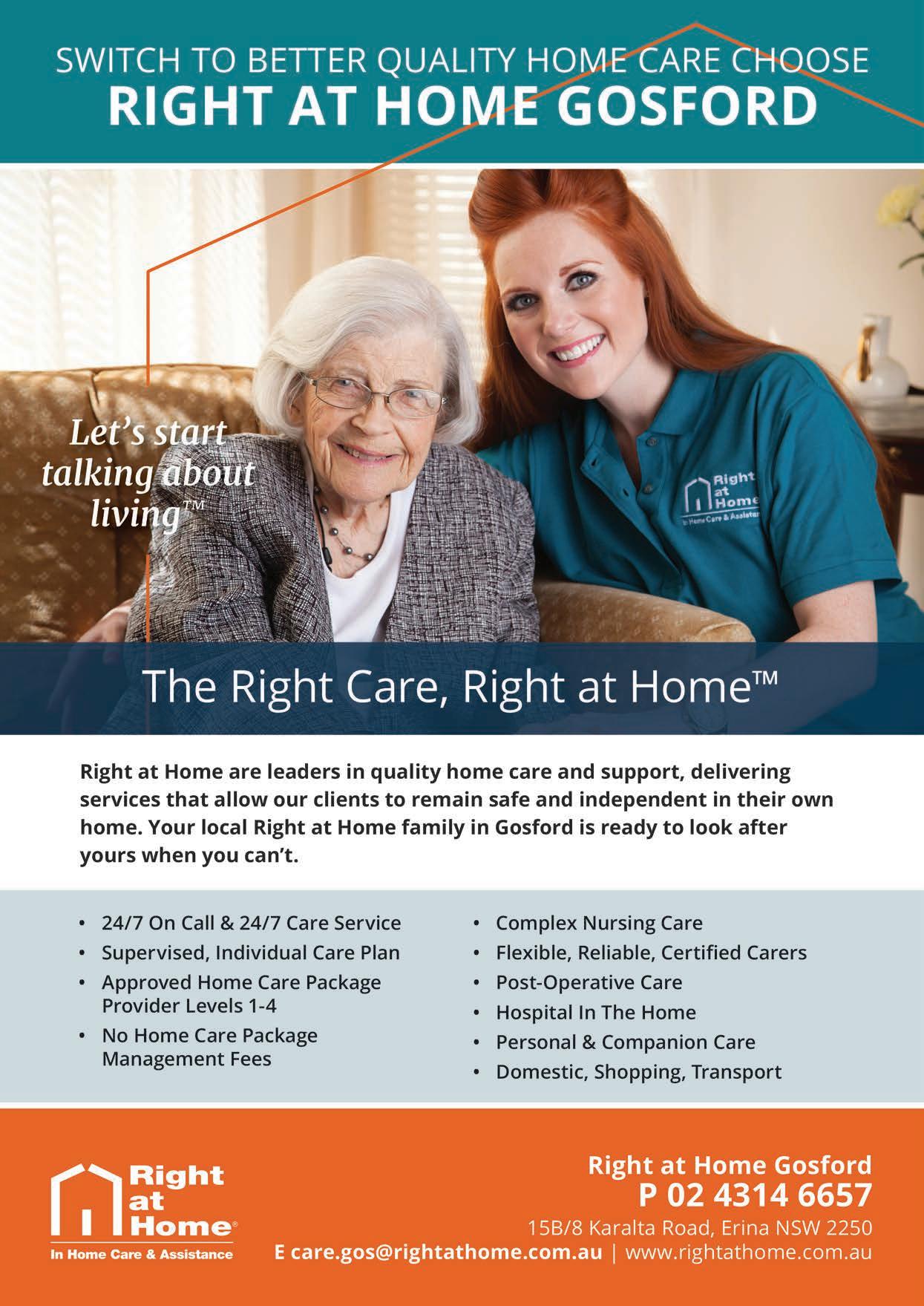
I am so glad you were brave and asked this question, voicing your fears, because I feel uniquely qualified to encourage and advise you here – even though I am not retired myself. How, you might ask? Because I have a close source who has done exactly what you are about to do. My dear mumma.
In fact, my mumma lost her husband literally on the day she retired. He had a very fast and acute illness and died 3 weeks from diagnosis. I rushed my mum from her work farewell to arrive bedside with only hours to say goodbye. Mum found herself early retired and widowed on the same day.
As you mentioned, you are working your way through your grief and adjusting to life without your husband. I honour the strength and capacity building that requires. It is brave and courageous to tackle the changes imposed upon you. Lean into and push on with that bravery and courage, because you are right, life is short, so live it.
Whilst you didn’t have time or warning to prepare for widowhood, you do have the choice and time to prepare for retiring. I remember being told by a wise person, “you must plan for your career after retirement” and I have witnessed many retirements since and can see this is true. Without a plan many retirees falter and crash with false expectations (not being met), irritability and boredom, and yes, loneliness.
I know exactly how widowhood can suddenly yank you into a world of aloneness after couple–dom, and loneliness. And retiring can also radically change the rhythm and routines of your day that can also exacerbate aloneness and loneliness. They are though, two different things.
READER QUESTION: “I am a few years into adjusting to widowhood. It has been hard but I have been doing the work and going ok. I am now planning an earlier than expected retirement because I have the means. My husband’s untimely early death has taught me that life is short; so live it. I realise I am retiring before many of my friends. I already live with a sense of loneliness. I want a posse of retirement friends and playmates – but I am nervous and don’t know how to start. Now I wonder if I am making a big mistake. Can you offer some advice and guidance?”
You can be alone and not suffer with loneliness. It just takes effort to put yourself into new environments and activities.
I am happy to say, for my mumma, after a year or so in the shock and wilds of grief – she transformed and did a magnificent pivot to create a retired life of envy – travel, friends, passions, activities etc. And so, I went to the source to get some of my mums’ best pieces of advice and encouragement.
Put your big girl pants on, and boots too – and get out there. A great adventure awaits – and many playmates are out there ready to welcome you.
Push yourself out of your comfort zone and sign up for things and put yourself into new situations and environments.
Find 55+ activity groups – yoga, gym, walking, culture, arts, movies –whatever interests you and just show up.
Some gems my mum found were U3A, movie clubs, and theatre appreciation group events (going to the theatre alone was too sad for her).
Go with an explicit ‘agenda’ and desire to find friends and connection. My mum’s advice and experience is that most people are warm and welcoming (they understand, and may have also been through their own losses, changes and initiations into a group).
You will also find out how many other ‘widows’ are out there – it is not such an exclusive club – and there is a lot of love and support and friendship ready to be extended to you in a very genuine way.
Put your big girl pants on, and boots too – and get out there. A great adventure awaits –and many playmates are out there ready to welcome you
Follow up contacts that you connect to with invitations for coffee catch ups and friendships will grow thick and fast and strong.
Some friendships that my mum has made in the past 18 years are the strongest, most meaningful connections of her life, and they have provided a great sense of belonging and many rich experiences. She and her retirement posse have shared many domestic and international travel adventures and have become as close as family.
Trust your decision to retire and lean into new life and love. It is not a mistake; it is just fear you are feeling – and you are allowed to be anxious and scared – and – do it anyway. Its success just depends on how you do it.
All the very best.
Much love, Sarah x
Sarah Tolmie – Life & Love: Sarah is a marriage therapist, life & love and relationship coach, end–of–life consultant, an independent and bespoke funeral director and holistic celebrant. She provides holistic care, mentoring, guidance, healing and transformation for individuals, couples and families at their most important times of life & love – at end–of–life, in love & relationship, and in ritual and celebration. Sarah has a relationship online course for couples called “Creating a Miracle Marriage” and a free resource and video series for families facing dying, death and grief called “Landscapes of Life & Love and Loss”. To find out more, visit www.sarahtolmie.com.au

Today I am enjoying a warm pumpkin soup, a bit of cracked pepper. The soup mug warms my cold hands and the smell brings back cheerful memories of my mum who passed away over 13 years ago.
Components of our food play an active role in areas that affect our mood. You may recall a good feeling from eating a piece of chocolate, cake, or hot chips. The good feeling may come from joy in the taste, texture, crunch, a happy memory triggered by the food, or from satisfying your craving or desire. Enjoying food is a solo or a social experience. Almost all social gatherings are elevated with sharing in the joy of food and drink.
Good feelings can also come because you were genuinely hungry and you satisfied the hunger by eating.
Many of us reach for something soothing to eat or drink when we feel low or anxious, or stressed. Soothing with food or drink that is readily available in the kitchen cupboard or fridge, via drive–through or home delivery, is a very common form of self–soothing. After all, no appointment is required and nobody else knows if you are self–soothing with food or drink and it seems affordable.
However, food and drink can affect our mood by inducing bad feelings too. Humans have been brewing and consuming alcohol as early as 7000 years BC. The drug, alcohol, affects
every cell in our body and crosses the blood – brain barrier easily. Alcohol can make us feel happy, but excess can disinhibit feelings of rage, help us to block–out feelings and is a mood depressant. Reaching for food or drink can be so automatic we don’t even realise the moment it becomes a habit or worse, an addiction.
When we overload our brain with the intensely rich tasting foods or foods loaded with highly processed sugar – fat – salt combinations we get a dopamine release that is higher than in natural, unprocessed foods or drinks. Australian neuroscientist Dr Selena Bartlett and her team researched the effect of highly processed sugar and alcohol on our brain and findings suggest that sugar is addictive, along the lines of alcohol and nicotine. Research has focused on one of the more prominent pleasure –reward chemicals released in our brain, dopamine.
Psychiatrist Dr Anna Lembke writes in her book, Dopamine Nation, that in our modern, busy society we are all
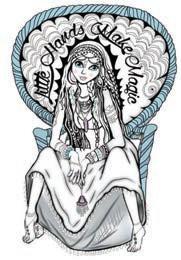
Many of us reach for something soothing to eat or drink when we feel low or anxious, or stressed. Soothing with food or drink that is readily available in the kitchen cupboard or fridge, via drive–through or home delivery, is a very common form of self–soothing
trying to buffer or distract ourselves from pain. Food, alcohol, shopping, sex, drugs, binge watching TV are all efforts to soothe ourselves by seeking pleasure. It becomes a problem when the pleasure seeking is too much, too often and the behaviour, food or drug stimulates a
Little Hands make magic You are unique, so are we
Crystals choose you and I am the medium. Through my art let me guide you to find that perfect piece. littlehandsmakemagic.com.au @LittleHandsMakeMagic
release of dopamine that is too strong, aka, addiction. Dopamine and pain are basically sitting on a see–saw in the same location in our brain. On the nasty flip side of an excessive dopamine hit is an excessive experience of pain.
So, what might throw our pain and pleasure see–saw out of whack?
The Australian Dietary Guidelines describes foods that are high in processed sugar, saturated fats and or salty foods and alcohol, even soft drinks as “discretionary foods”. An interesting term considering the potential effects some of these have on our brain and adverse effects to our health! The Australian Dietary Guidelines refer to them as “discretionary” because they do not meet any nutritional requirement, but when consumed occasionally or in small amounts they contribute to the overall enjoyment of eating. Australians are advised to limit intake. So, there is nothing good in these foods and drinks for our body other than the joy released in our brain when we eat or drink them. Australians often
consuming discretionary foods without much discretion. Perhaps this term “discretionary” requires a re–think and we should replace these foods with a warning label!
The Australian Dietary Guidelines recommends between zero and a limit of three serves per day for adults, even less for kids, at ½ a serve for kids under 8 years of age. Yet Australians of all ages consume more than three serves of discretionary food and drinks daily, 30% of our energy requirements!
Great news. To return to normal food and mood responses, you don’t need to
jump on a fancy diet.
Double the amount of vegetables and choose a rainbow of colours in your vegies.
Weed out foods high in processed sugar, saturated fats, and salt from the shopping trolley.
Challenge yourself with the question, “do I need this food or drink or just want it?”
If you need help with any of this see your dietitian for support to guide you through the food side of changes. Making changes is harder than you think, and most people need help to put their good intentions into action and keep them going long enough to form new habits.


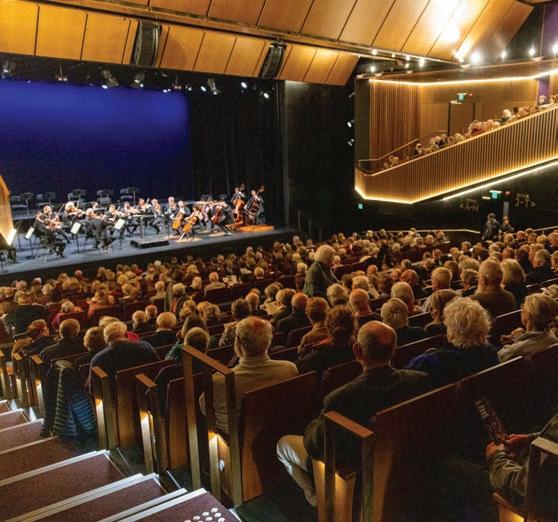

Chatting is such a simple concept, but so important for mental and physical health. Here, Toukley and District Art Society Vice President, Lainie Grugan tells us about the Chatty Café initiative and how to get involved.
Toukley and District Art Society (TADAS) have chosen to become a Chatty Café venue, joining a national scheme to reduce loneliness and social isolation. Initially, TADAS will begin this venture with a table available on Wednesday afternoons, from 1pm–3pm, with a visit to our Chatty Café certainly brightening your day!
The added bonus for anyone who would enjoy a coffee and chat with us, will be the opportunity to take a look at our new art exhibition, along with the many beautiful crafts, cards and gifts.
The Chatty Café scheme is ACNC (Australian Charities and Not–for–profits Commission) approved, providing opportunities for people who may be
lonely or socially isolated to meet other customers or participants who also want to “have a chat”. Venues of all types can participate including art galleries, cafés restaurants, libraries, aged care residences and retirement villages.
The Chatty Café encourages hospitality and other social venues all around the country. There are now over 200 places participating, with Toukley Art Society being the first on the Central Coast.
The idea is to provide a shared table where people can sit, enjoy refreshments if they like and simply “have a chat”.
The scheme was set up with the aim of reducing loneliness, as the social and health benefits of interaction are so well documented.
Venues who join will receive welcoming yellow table signs stating, “This is a chatty table”. The seats at this table are for customers who are happy
The show will be held on the weekend of Saturday 29th June from 9am to 4pm and Sunday 30th June from 9am to 3pm. The Fair and show is one of Australia’s largest Orchid Fair and Shows, with 26 Vendors selling Orchids and associated products, along with the Orchid Show showing hundreds of orchids all in flower. Last year drew numbers up to around 5000 people from across the Coast and State. There will be potting demonstrations and talks throughout both days. This is a community event with no entry fee.
The show is



to chat with other customers or perhaps a volunteer who may be just waiting to “have a chat”.
Venue operators/staff members place a sign on the table, on a day or time of their choosing, with some venues having a permanent table.
Often Chatty volunteers make themselves available to welcome newcomers. Everyone is welcome. People can be on their own, as a couple, a carer with the person they care for, friends, family and everything in between. Everyone is invited!


Located right here on the Central Coast, The Ronald McDonald Family Room Gosford is a refuge for families with a sick or injured child staying at Gosford Hospital.
Since opening in 2013, over 56,000 people have walked through our doors to step away from the ward, take a break, grab a snack, a warm cup of tea, have a shower, use the laundry facilities or simply unwind in our comfortable lounge area.
With no government funding, we rely on the generosity of local businesses and community members along with our two major fundraising events; our Raise Love Charity Ball Central Coast and our Golf Day, to provide us with the funds we need to keep delivering this valuable resource to Central Coast Families.
Scheduled for the 15th of June this year, our Raise Love Charity Ball Central Coast is a great way to raise vital funds to assist Central Coast families with sick or injured children, connect with the community, network with local high profile businesses and align with a Central Coast charity with strong brand equity.
Why not take your staff/clients or friends/family out for a heartwarming night to remember. We hope to see you there!
Previously sold out each year, this year we are moving to bigger premises and are holding the event at the newly built Gosford RSL!
As such, we are giving you the rare opportunity to be a part of our ball this year. Come along, spoil yourself and your guests and help keep families close!


Date: Saturday 15 June 2024
Time: 7:00pm - 11:30pm
Venue: Gosford RSL Club, 26 Central Coast Hwy, West Gosford
Dress code: Black Tie
Package includes 3 course meal, four and a half-hour beverage package, live auction, entertainment and more!
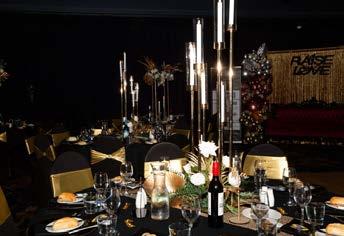
For further details and ticket purchases go to www.nnswfundraising.rmhc.org.au/event/raise-love-charity-ball-central-coast-2024/home or contact Jenny on 0477 997 097 Be quick, tickets are selling fast!
Our club is one of many on the coast and all over Australia & New Zealand, as a matter of fact all over the world. We meet monthly as do most clubs. At our monthly meetings, we quickly attend to business, then morning tea, after that we usually have a guest speaker. Many of our members then have lunch together.
Probus clubs are not for profit organizations for the over 55s, retired or semi–retired. Probians meet to have “Fun, Friendship & Fellowship”. Some clubs are for men only, others are for women, but most clubs are open to both men and women. We have a committee who organise various facets of a club such as ours. We go on monthly picnics to various parks, day trips using our Opal Cards, one day coach trips or even a full week away. Some clubs even organise cruises.
Some Probus Clubs have intra clubs within, such as camera, walking, theatre, and luncheon get togethers.
Our club, The Wyee Probus Club Inc, started from an interest

meeting back in August 2017 with just 14 people. Since then many members have expressed how happy they are that they joined our club. They have found new friends and relationships, places to go with these new found friends, a sense of security. They have visited places that they have wanted to go but not by themselves. New experiences. A reason to get out of bed, get dressed and go out with these friends. At our picnics we generally bring our own lunch and beverage. We sit and chat, then maybe have a game of quoits and/or bocce. One of the many reasons we call ourselves the “Fun Club”.
For further information about Wyee Probus Club, call Jeff Boler 0416 147 128 or for a club in your area, please go to the Probus website www.probussouthpacific.org or phone 1300 630 488

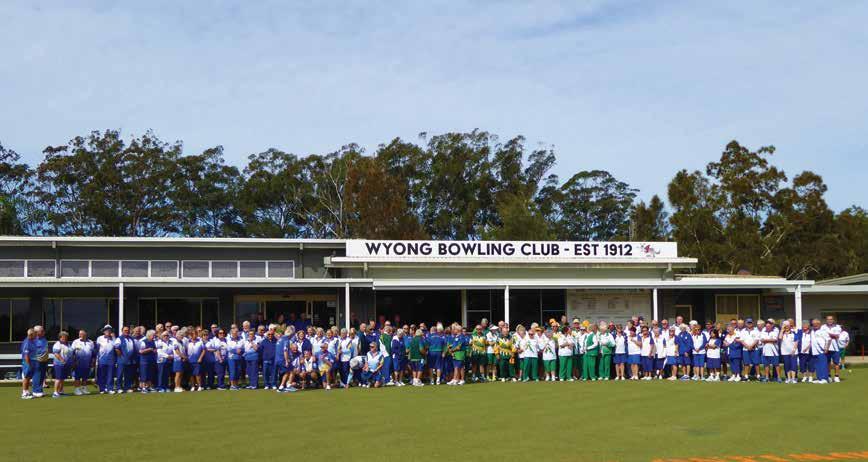
With the change of every season comes new injections of colour to ensure our wardrobes are re–energised and our style spirits are lifted to new heights.
This Autumn/Winter there are vivacious bold hues, earthy mixes of tonal colours and frosty pastel shades. However, one colour that is coming in “hot” and is making a strong comeback is Red!
Now, if you have some Red in your wardrobe from seasons gone by, get it out and if you don’t have any of this heart–warming hue, maybe you need to get your Red radar on next time you have the urge to add something new to your look this season.
Read on for how to wear this Winter’s hottest hue.
TIP: Any colour you wear should be perfect for your colour palette however, it is even more important when wearing bold hues. A super simple way to determine if a shade of Red is right for you is by holding the colour up to your face then closing your eyes. When you reopen your eyes notice what you see first – you or the colour? In theory, you should see you (especially your eyes!). If you notice the colour first then it may be the wrong shade for your complexion and features as it is detracting from your natural beauty, not enhancing it. When a colour enhances your natural beauty, you will see you and you will look more radiant and your complexion and features will appear brighter!
This Winter there are two ways to wear Red –Head to toe or as an injection to an outfit.
Have fun with Red this AW24 and get creative, try new looks and let your fiery side explore this dramatic and timeless hue.
Vibrantly yours, Sam & Jordi Woods x
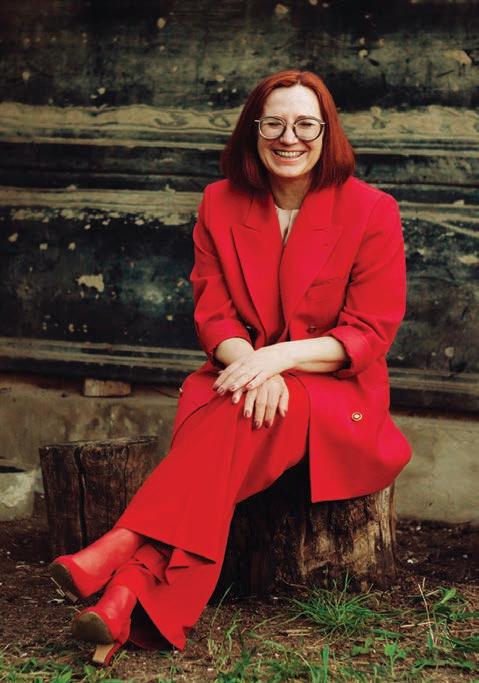


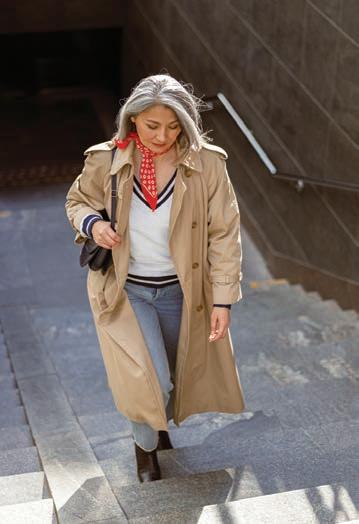
Head To Toe styling is ideal for those who need low contrast colour combinations! Mix up to three shades of red together using hues such as Crimson, Chilli, Ruby and Scarlet.
Adding an injection of Red into an outfit is great when high contrast is required. Bold pops of this fiery hue will add intensity to neutrals or an air of quirkiness to other bold shades such as Amethyst, Hot Pink and Lime.
Understanding styling and fashion is one thing. Having a super natural flair for making everyday people look incredible is another. Once you’ve met Sam & Jordi Woods, it’s hard not to catch their infectious passion for dressing to match your own lifestyle, personality and charisma. Through their consultancy ‘Vibrant Concepts’, Sam & Jordi have transformed the lives of thousands. Let Sam & Jordi show you how to look and feel fabulous everyday at their Style Studio in Erina – learn the art of illusion dressing, colour matching, styling, translating fashion trends and savvy shopping with their unique VC Signature Styling Systems and services that are truly personal and really work! To contact Vibrant Concepts phone 0425 221 676
When was the last time you truly felt comfortable and confident in the bras you wear?
As women, our bodies change so much throughout our lives. Contrary to popular belief, the shape of our breasts is mainly pre–determined by genetics. Pre menopause, menopause, fluctuations in weight and the natural passage of time are all contributing factors to why our boobs no longer look how they once did. As our skin loses collagen and elasticity, particularly post–menopause, inadequate support from a bra can contribute to this process. Without proper support, breasts may begin to descend, moving closer to our belly button sooner than we would like!
One thing that we don’t think about or often take for granted is the power of a good fitting bra! Not only does it significantly slow down the natural sagging of our boobs (by counteracting gravity) it dramatically improves the way we look in our clothes, how our clothes fit and how confidently we step out into the world and is also much, much cheaper than surgery!
THE TAPE MEASURE METHOD
Gone are the days where you could walk
into a department store and have a lady fit you with a tape measure and walk out with a selection of bras. Using a tape measure was initially created as a method when, in the 50s, cup sizes only came in A to D and if you were bigger than that you were encouraged to go up a back size instead. We now know this method is incredibly inaccurate and although using a tape measure gives you a starting point, it does not consider these three things.

combination with any of the other shapes.
Brands, styles and shapes of bras There are so many bras to choose from, full cup, balcony, half cup, plunge – how can a tape measure tell you which shape works best for you and your breast type?
The shape of your breasts East West, Tear–drop, Round, Bell shape, Relaxed, Side set, Round – a tape measure will not determine what shape your breasts actually are and which bras will work for you.
Breast Asymmetry
40 percent of women have breasts that differ in size, ranging from a slight asymmetry to an entire cup size or two difference. It’s common to have asymmetric breasts in
With breast types and shapes there’s no such thing as the perfect or ideal breast shape to be every woman’s aspiration. There’s just a whole range of breasts, types that are all unique and all beautiful. Breast shape charts and measuring charts are not definitive; they only attempt to help you understand your breast shape and size better. This is where an independent professional bra fitter can do all this hard work for you!
Opening hours
Monday to Friday 9am–4pm & first Saturday of every month 9am–12pm



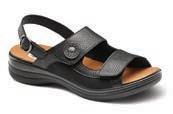

We are specialists in fitting as well as providing comfort and orthopaedic footwear. We provide footwear for difficult to fit feet ~ in particular people with diabetes, arthritis, swelling and bunions as examples. We also provide a home visiting service and shoe modifications and repairs.
Off street parking & disabled access available 17 Cary Street Wyoming 4323 7515
& colours available
A properly fitting bra should snugly contour to your body. The back band plays a critical role, providing about 85% of the bra’s support. If it’s too loose, it can ride up, leading to rounded shoulders, compromised posture, and potential discomfort.
Here are the three magic steps to knowing what a well–fitting bra should look like.
The back band should be firm on the loosest hook with about an inch give – and it should run parallel all the way around your body. If you are wearing a back band significantly bigger than your dress size its time for a fitting.
The underwire should not touch your breast tissue – the wire should sit under your arm pit away from breast tissue and should encase your whole breast – not just sit on top of it – if this is you its time to get some help.
The centre gore should lie flat on your chest – it should not pull away and your boobs should not spill out when you move around or lift up your arms.
You might be thinking, “But I can’t wear a tight bra.” This concern is valid, but it’s essential to understand that when you decrease the band size, you need to increase the cup size accordingly. For instance, if you typically wear a 16DD, the sister size with the same cup volume is a 14E. Therefore, if you opt for a 14 band, you’ll likely need to go up to
an F cup or even a FF to accommodate your breast volume.
This all sounds promising, but what if you’ve faced breast lumps, cysts, or even battled cancer? Dealing with breast health issues, including cancer, poses unique challenges in finding a comfortable, supportive bra. Post–treatment, the body undergoes significant changes, from painful surgical scars to swelling, sensitive skin due to radiation, and alterations in breast size, position, and shape.
A woman’s bra is intrinsically linked to her body image, confidence, and self–esteem. The struggle to find a well–fitting bra amidst these physical changes can exacerbate both physical discomfort and emotional stress — hardly what anyone wants to endure after navigating the journey of cancer treatment. To find the right shape, style, and size for you, it’s crucial to seek advice from an independent professional bra fitter who can guide you through the latest advancements in bra craftmanship and educate you about how to navigate the world of bras, personalised to you.
We invest in our health and wellbeing in so many ways, yet often settle for poor quality, ill–fitting and uncomfortable bras. You deserve to find bras that fit you. You deserve to be comfortable. There are bras out there from a size 4 back (26’) to a 38 (56’), cup size AA to O (yes O – say the alphabet and see how far you get!) so it is definitely NOT a ‘you’ problem. You just need to find someone who has access to the size and style you need, and this is where an independent fitter can help you. You never know, you just might learn to love your boobs and bra shopping!

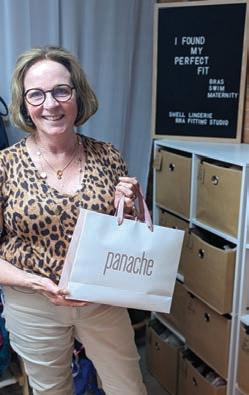
Shell Lingerie is an empowering Bespoke Bra Fitting Service on the Central Coast NSW. Offering virtual and in studio fittings Shell stocks bras up to an M cup and offers a wide range of bras, swimwear and lingerie. Her service is designed to be everything a large department store is not, and she has a growing community of over 150 women on the central coast who have joined her bra revolution. She is an ‘embrace your body’ advocate and although doesn’t hate the term ‘body confidence’ acknowledges that our relationship with our bodies is ever changing. What she does know is that you deserve bras that fit you and hopes she can support you and your boobs soon! Contact www.shelllingerie.com | @shellfullerbust

March is recognised as Lymphoedema Awareness Month, a time dedicated to raising awareness about a condition that affects individuals worldwide. Lymphoedema is a chronic condition characterised by swelling, tightness, and other symptoms, with secondary lymphoedema often linked to cancer treatments, surgeries, injuries, or infections. Cancer–related lymphoedema is a prevalent form that can significantly impact one’s quality of life.
According to the National Breast and Ovarian Cancer Centre (NBOCC 2008), research indicates that approximately 20% of breast, genitourinary, gynaecological, or melanoma survivors may experience secondary lymphoedema. Understanding the causes, appearance, affected areas, treatment options, and the importance of early detection is crucial for effective lymphoedema management.
Kate Perkins, Cancer Rehab Occupational Therapist (OT) and Lymphoedema Therapist at Cancer Rehabilitation & Lymphatic Solutions, states, “Early detection and education is key to empowering individuals with lymphoedema to lead comfortable lives. By leveraging the latest advancements in technology, we can detect subtle changes before visible symptoms appear, enabling timely interventions that can make a significant difference in patients’ outcomes.”
CAUSES OF LYMPHOEDEMA
Lymphoedema can be primary or secondary. Primary lymphoedema stems from genetic conditions affecting the lymphatic system, while secondary lymphoedema results from damage caused by external factors like cancer treatments, surgeries, injuries, infections, obesity, and certain medical conditions. These factors disrupt the normal flow of lymphatic fluid in the body, leading to swelling in the affected area.
WHAT DOES LYMPHOEDEMA LOOK LIKE?
Lymphoedema typically presents as swelling in the arms or legs but can affect other areas such as the chest, abdomen, neck, and genitals. Symptoms include swelling, heaviness or tightness, restricted range of motion, recurring infections, skin changes, skin thickening, and scarring. Early diagnosis and treatment are essential to prevent complications.
THE IMPORTANCE OF EARLY DETECTION
Early detection is key to implementing preventative strategies for a comfortable life. Advanced SOZO technology at Cancer Rehabilitation & Lymphatic Solutions aids in early detection by analysing body composition changes and fluid levels. The system provides an L–Dex (lymphoedema index) score to identify subtle changes indicative of lymphoedema progression before visible symptoms appear.
By capturing L–Dex readings for all patients, Cancer Rehabilitation & Lymphatic Solutions is able to tell a story. During
periods of hot weather, L–Dex readings for most patients tend to be elevated. In cases where a patient is battling a virus or infection and their lymphatic system is under increased strain, close monitoring of the L–Dex reading is recommended. In cases where there has been a flare–up of symptoms with increased swelling, personalised compression garments can be prescribed. The team will tailor the solution to fit each individual’s unique and evolving circumstances.
Cancer Rehabilitation & Lymphatic Solutions patient, Mel Luxford, emphasises the need to normalise discussions about cancer rehabilitation. Mel urges for increased awareness, stating “Everyone stops at the word cancer, but we need to normalise talking about cancer rehabilitation. There tends to be an assumption that once you’ve finished chemo and radiotherapy that you’ll go back to normal. But there’s a whole post–treatment process that’s often overlooked. Surgery for cancer demands rehabilitation just like any other major surgery”.
CAN LYMPHOEDEMA BE TREATED?
Although not curable, lymphoedema can be effectively managed with early diagnosis and treatment from accredited practitioners like Kate Perkins at Cancer Rehabilitation & Lymphatic Solutions. Treatment options include OncoLaser™ therapy using MLS® Laser Therapy, compression therapy, manual lymphatic drainage massage, and exercise to reduce swelling and improve quality of life.
Lymphoedema Awareness Month serves as an opportunity to educate individuals about this condition and emphasise the importance of early detection and proactive management. By raising awareness about lymphoedema’s impact on daily life, individuals can take control of their health and seek support when needed.
For individuals at risk of developing lymphoedema or seeking support for managing the condition effectively, the team at Cancer Rehabilitation & Lymphatic Solutions is dedicated to providing expert care and guidance.

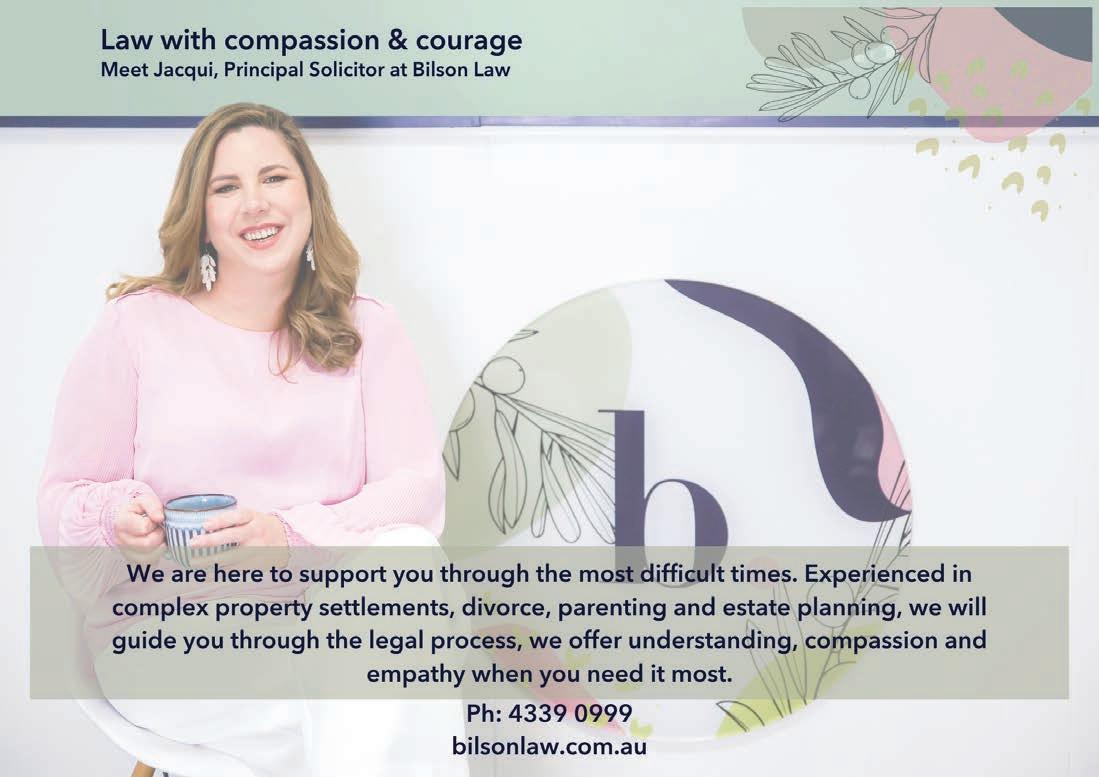
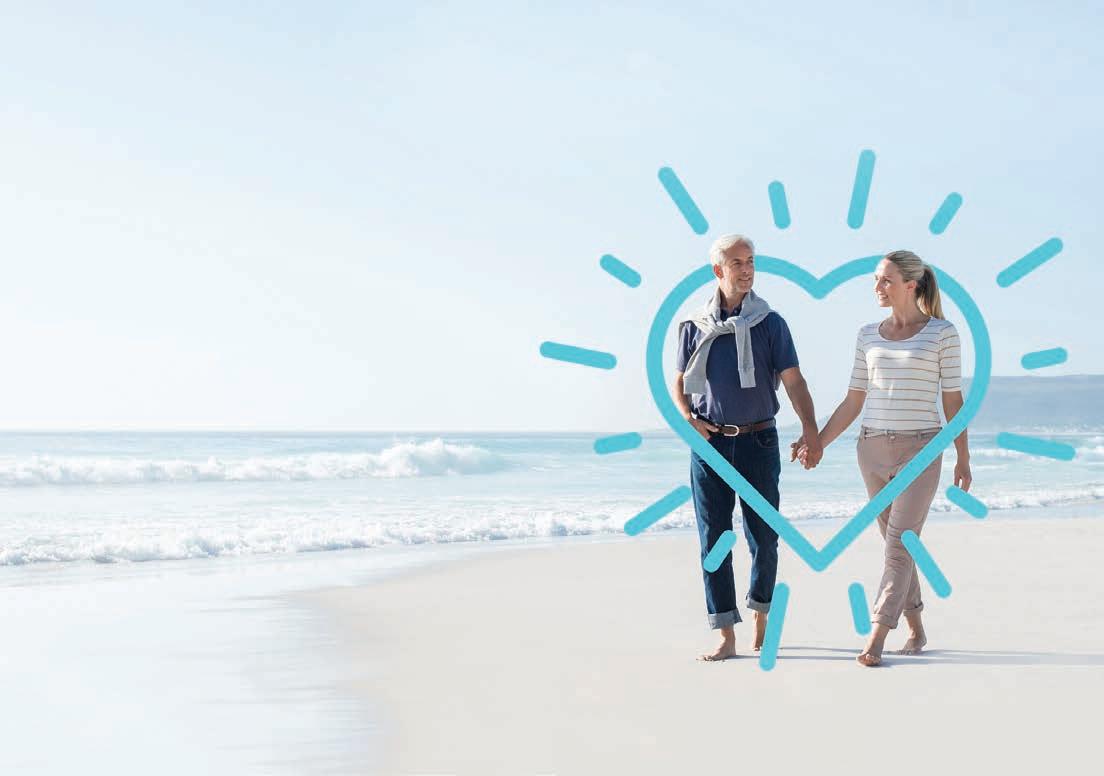
For over a decade, Pacific Sleep has been your local provider for sleep health solutions on the Central Coast. Proudly independent, we offer ongoing care and support with all major brands of sleep equipment. We won’t sleep until you get the sleep you deserve!
Contact Pacific Sleep today for:
• Home sleep testing
• CPAP trials and rental
• CPAP or BiPAP equipment and support
• Home oxygen therapy solutions, including AIRVO ™
Conveniently located at North Gosford Private Hospital Specialist Centre and at the heart of Toukley shopping district.
Email info@pacificsleep.com.au | pacificsleep.com.au | Pacific Sleep is an approved DVA supplier North Gosford Specialist Centre, Suite 2, 14-18 Jarrett Street Toukley 45 Canton Beach Road

The billions of cells that make up the human body require a stable body temperature and pH or acid/alkaline balance. Individual organs and tissues of the body require different pH levels for optimal function.
For example, the stomach requires a very acidic environment of pH 1–3 to effectively break down food and protect the gastrointestinal system from infection. However the blood has a very narrow, optimal pH window of 7.35–7.45 and if the pH falls above or below this pH reference range, it can become life threatening. Urinary pH sits between 5–8.
To some degree acidity in the body naturally increases with age and ongoing metabolic acidity is linked to chronic disease and poor health. A predominantly acid forming diet can also contribute to an ongoing acidic environment in the body and research is looking into the result of chronic, mild metabolic acidosis or latent acidosis. It appears an ongoing acidic environment can contribute to health problems associated with bone loss, muscle mass loss, energy metabolism as well as poor liver and kidney function.
Things that may contribute to chronic acidosis in the body include a typical western diet high in animal proteins and cereals, certain diets and fasting resulting in keto acidosis, lack of exercise, stress, chronic disease such as diabetes, gout and kidney disease.
Meat, fish, cereals and dairy products contain sulphurous amino acids, which means they are more acidic after they are metabolised via the body and therefore have a more negative effect on the acid/alkaline state of the body. An acid forming food is not necessarily a bad food, as many excellent protein sources are naturally acidic, so it’s about
balancing the meal with an abundance of alkaline forming foods, which include most vegetables, salads and fruits. These foods are high in mineral citrates, which are responsible for the alkaline effect. It’s important to be aware that the pH of the food prior to consumption can be different to the pH value after digestion. For example citrus fruits are acidic prior to digestion but after they are metabolised they result in–slight alkalising action.
The body requires both acid and alkaline forming foods for optimal health and because the acid load of acid forming foods is approximately 4 times higher than the alkaline value of alkalising foods, we can focus on the 80/20 rule at meal times. 80% of the meal should be vegetables or salad and 20% should be protein. Typical weight loss dieting can result in the break down of fat as well as the production of keto acids which can contribute to an acidic metabolic state and further burden the ability of the body to breakdown fat, so maintaining a less acidic environment is important when eating to reduce body fat.
Many studies have shown the negative impact of acidosis on bone density and an increased risk of osteoporosis. This can occur as the body draws calcium and magnesium from the bones to alkalise the blood if its too acidic, which promotes demineralisation of the bones. Bone cells are also impacted by chronic acidosis as bone forming osteoblast cells are inactivated and bone–resorbing osteoclasts are more activated in an acidic state.
Regular exercise contributes to a longer life and it’s also important for simply strengthening the body and increasing circulation throughout the body. Exercise supports acid excretion via the kidneys and increased exhalation of carbon dioxide via the lungs which both positively support the
acid/alkaline balance of the body.
The kidneys are the main organ to process acidity so those with suboptimal kidney health are especially advised to maintain a low acid forming diet. Reduced kidney function results in a reduction in excretion of acid from the body leading to a further burden on organs. Often as people age, they don’t have the appetite or motivation to eat a balanced diet rich in a selection of vegetables and fruit, as often it’s a more simple eating plan of protein and grains. This is sometimes accompanied by low water intake which can reduce the excretion capacity of the kidneys.
Things you can do to reduce the acidity in the body include eating a predominantly alkalising diet rich in vegetables, salad and fruit, as well as taking a supplement high in alkalising mineral citrates
One way of measuring how acidic the body is can be done via testing the urine and an ideal result is a pH 6.8–7. Urine is affected by diet, medications, disease and even the time of day, so for the most accurate results collecting several measurements at the same time every day is important. Due to our food intake impacting our acidity, it’s best to measure directly before each main meal. Menstrual blood in the urine can also affect results so it’s best to measure urine acidity at least 4 days away from the menstrual cycle. Urinary pH strips can be bought from chemists.
Things you can do to reduce the
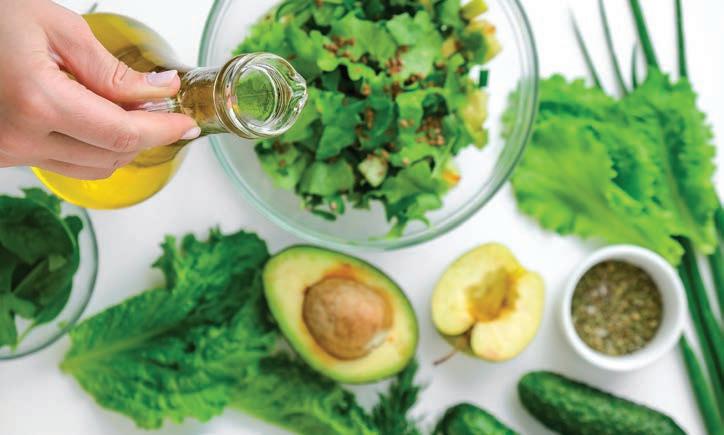
acidity in the body include eating a predominantly alkalising diet rich in vegetables, salad and fruit, as well as taking a supplement high in alkalising mineral citrates. Your nutritional health professional can prescribe a practitioner range supplement that is excipient, additive and sweetener free, as well as taking into account any current health issues and medications that need to be considered prior to dietary and supplement changes.
For further information or to make an appointment please contact Diana Arundell –The Avoca Naturopath and Nutritionist on 0410 465 900
Diana Arundell is a university–qualified naturopath and consults from her
Alkaline forming foods
Spinach, kale, rocket, ginger, dates, avocado, parsley, cumin, dill, carrot, celery, zucchini, broccoli
Acid forming foods
Rice, hard cheese and camembert, corned beef, salami and sausage, game, prawns, egg yolk
Further information can be found searching the Potential Renal Acid Load (PRAL) of food sources.
To some degree acidity in the body naturally increases with age and ongoing metabolic acidity is linked to chronic disease and poor health
was a nutrition lecturer at
University for 10 years, and is an accredited Journey Practitioner.
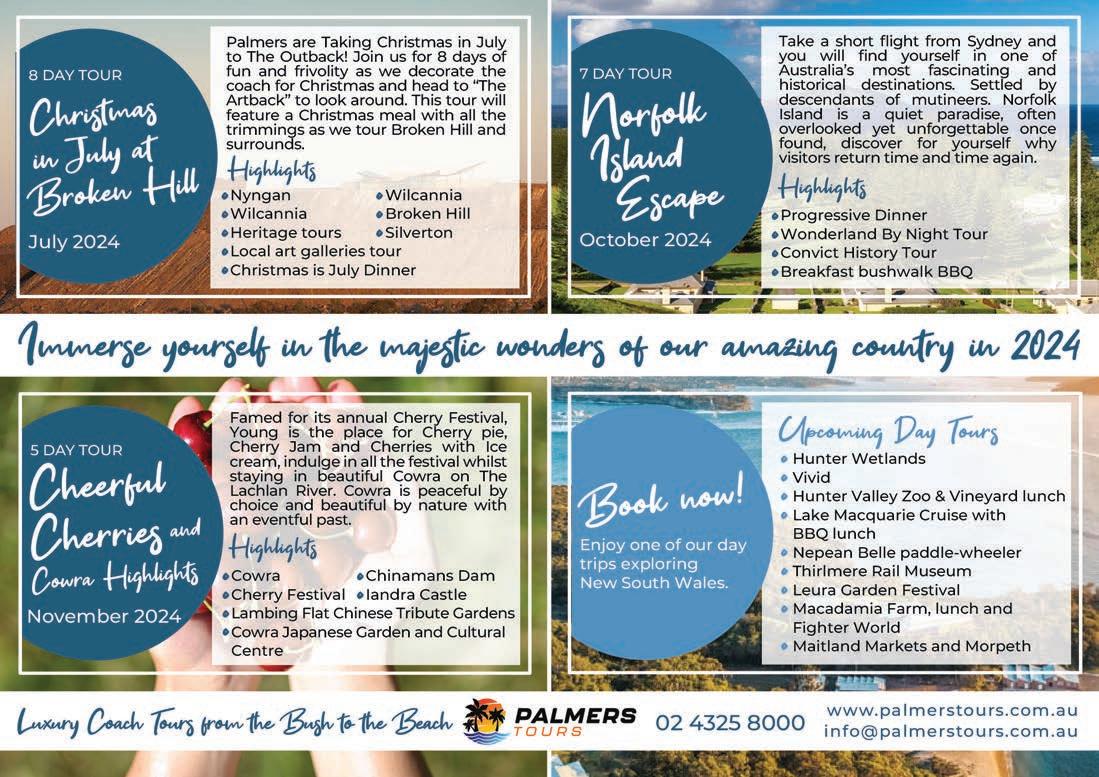
'Flat Pack' is the emotional story of a daughter having to pack up her father’s life as his dementia worsens. A story that asks at what point do we become our parents’ parents?
The nostalgia, the guilt, the happy memories, and a piece of found furniture are what await audiences in this theatre drama.
A very exciting first for The Art House, 'Flat Pack' has been fully supported through their Art House Creatives program and is their first produced work from concept, through development and onto the stage.
The work is written, developed, and performed by local artist Danielle Brame Whiting in collaboration with award–winning playwright and director Vanessa Bates, and multi–talented actress and movement director Angie Diaz.
“It’s so exciting to have my work
produced by The Art House, Wyong, and to be able to share the premiere of ‘Flat Pack’ in the venue where my idea first found its support. The staff of The Art House are genuine flag bearers for the support and development of local artists, and I feel proud that my work is able to represent them,” said creator, Danielle Brame Whiting.
The Art House has produced a new and engaging one–woman show that will both delight and tug at the heartstrings as audiences follow Debbie undertaking the task of packing up a lifetime of memories on her own.
'Flat Pack' is the pioneer production paving the future for The Art House as it seeks to cement its name among other great theatre producers, such as Belvoir Street Theatre, and Hayes Theatre Co.
Witness this beautiful first production, created by extremely talented artists from the Central Coast as it makes its world premiere in The Art House studio.


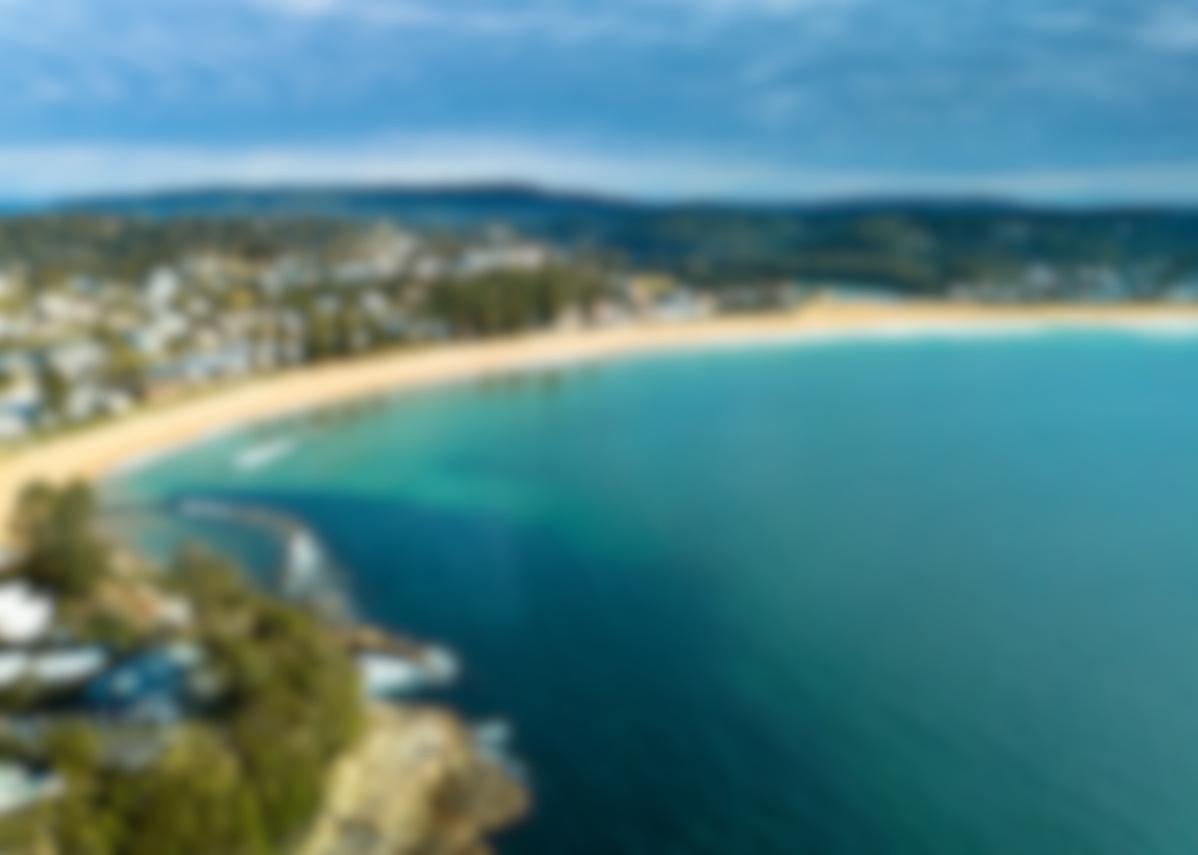
“A tender and dynamically delivered deconstruction of the joy, grief, and revelation that accompanies intergenerational transformation.”
– Luke CarmenThe Art House presents an Art House production 'FLAT PACK' Fri 17 & 18 May 7:30PM Tickets – Adult: $35.00, Concession: $30.00, Encore Member: $25.00, Under 30: $18.00 www.thearthousewyong.com.au Phone 02 4335 1485



